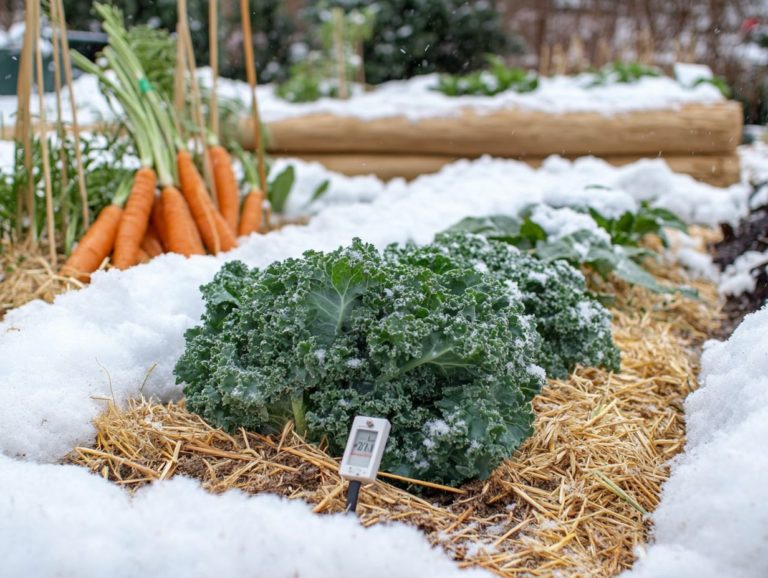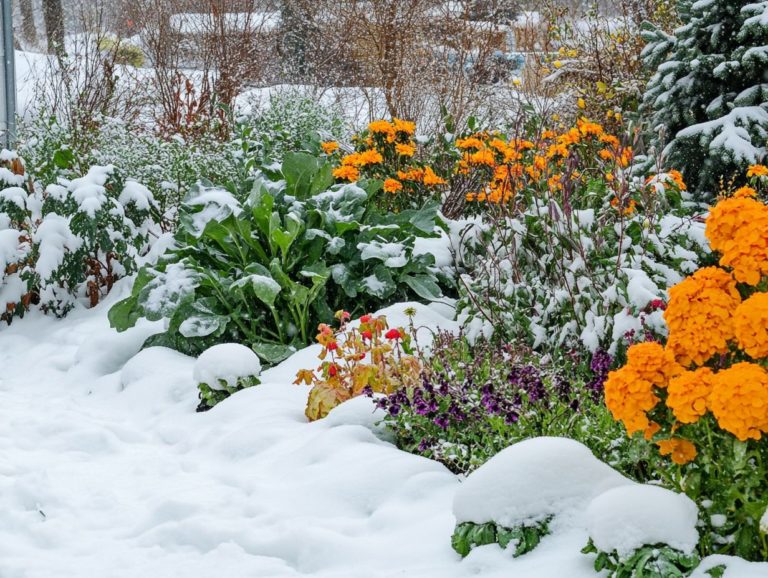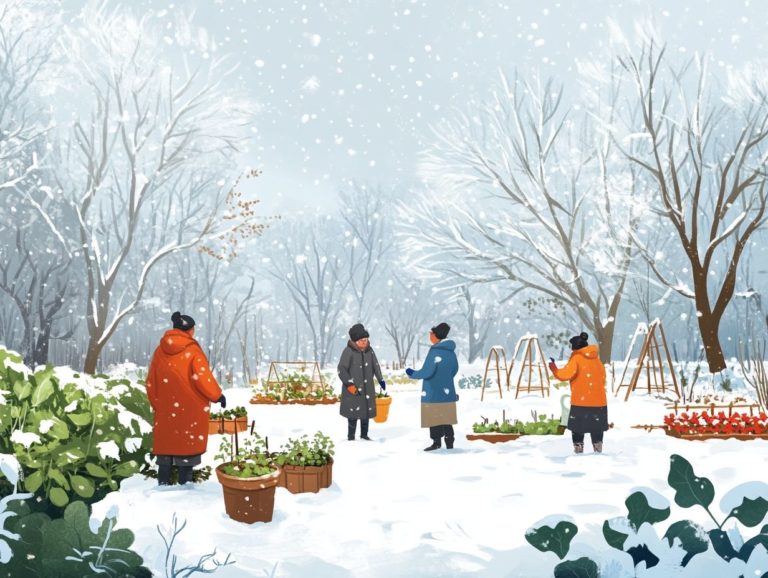What are the Pros and Cons of Greenhouses?
Greenhouses have garnered significant attention among gardeners and farmers, providing a specialized environment where plants can truly flourish.
This article delves into the definition and purpose of greenhouses, showcasing the myriad benefits they offer, including enhanced plant growth and extended growing seasons. However, it s essential to weigh the potential drawbacks, such as high initial costs and ongoing maintenance.
You ll find a discussion on critical factors to consider before embarking on your greenhouse project, as well as a comparison of alternative growing methods, empowering you to make an informed decision about your gardening journey.
Contents
Key Takeaways:
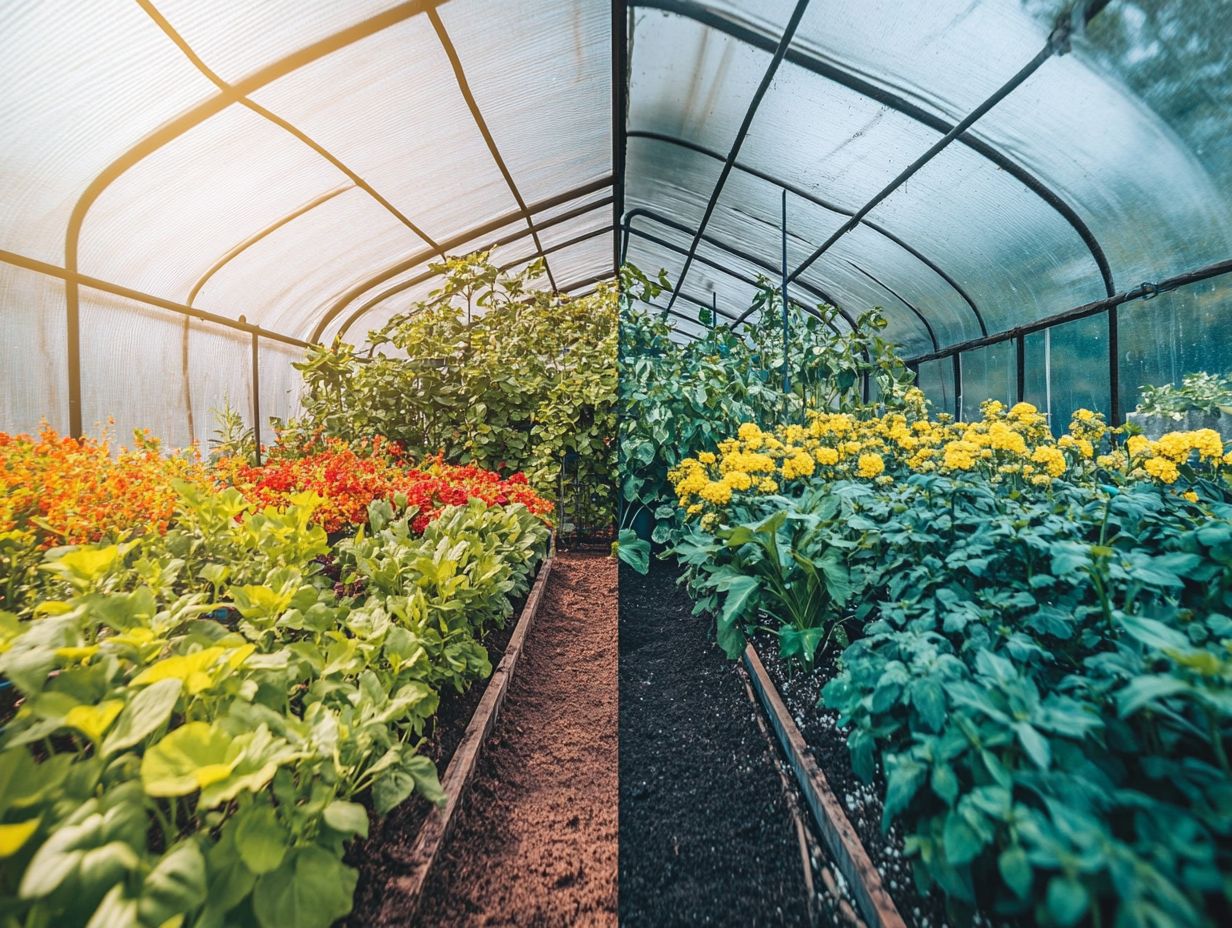
- Greenhouses offer improved plant growth and protection, as well as extended growing seasons, making them a great option for avid gardeners and farmers.
- Consider high initial costs and ongoing maintenance before building a greenhouse.
- Location, climate, size, and design are important factors to consider when building a greenhouse, and alternative growing methods should also be compared to determine the best option for individual needs and preferences.
Overview of Greenhouses and Controlled Environment Agriculture
Greenhouses are elegant structures crafted to establish a controlled environment for cultivating a diverse array of plants, ranging from vegetables to flowers and herbs.
They cater to urban gardening enthusiasts who aspire to maximize yield while embracing sustainability.
By expertly regulating temperature, water, and light, these sophisticated setups enable year-round cultivation, promote vigorous plant growth, and protect your crops from pests and unpredictable weather.
In doing so, they address the pressing challenges of modern agriculture, enhancing food security and fostering climate resilience.
Definition and Purpose
A greenhouse is your dedicated space for gardening, crafted to cultivate crops in a controlled environment, thereby enhancing food security and agricultural productivity.
Think of your greenhouse as a protective fortress against harsh weather and pesky pests, creating the perfect sanctuary for your plants to flourish.
By employing transparent materials, it captures sunlight while keeping heat trapped, ensuring a consistent temperature throughout the year.
With a greenhouse, you gain the power to manipulate humidity, ventilation, and light. Humidity is the amount of moisture in the air, which is essential for plant growth, allowing you to grow an impressive variety of plants from hearty vegetables and fragrant herbs to exquisite exotic flowers regardless of the external climate.
These controlled environments not only elevate your yields but also extend your growing seasons, highlighting their crucial role in the world of modern horticulture.
Benefits of Greenhouses
The advantages of greenhouses are manifold, offering significant enhancements to plant growth and extending growing seasons. This makes them a wise investment for both urban gardeners and commercial farmers alike, as they strive for profitability while championing sustainability.
Improved Plant Growth and Protection
A greenhouse offers the perfect environment to take your gardening to the next level, significantly boosting plant growth while providing essential protection against pests, ensuring a truly sustainable gardening experience.
By meticulously regulating temperature and humidity, greenhouses create optimal conditions that nurture vigorous plant development throughout the seasons. This controlled climate prolongs the growing period. It also boosts crop yield by reducing stress on your plants.
The enclosed structure acts as a shield, safeguarding your greenery from harmful insects and disease-causing organisms that can wreak havoc on outdoor gardens.
By incorporating sustainable practices like rainwater harvesting and energy-efficient lighting, you reinforce your commitment to eco-friendly gardening, paving the way for a resilient approach to food production and the conservation of biodiversity.
Extended Growing Seasons

Greenhouses empower you to extend your growing seasons by creating a controlled climate. This allows you to cultivate plants beyond traditional seasonal limitations.
With the ability to regulate temperature and humidity, these structures establish an optimal environment that significantly boosts plant health and productivity. By effectively managing water through modern watering systems, greenhouses minimize waste while ensuring your crops receive consistent moisture essential for vigorous growth.
This level of climate control translates into higher crop yields. You will enjoy increased harvests and gain the freedom to experiment with new species that might struggle to thrive in your local outdoor conditions.
Drawbacks of Greenhouses
Even with their numerous benefits, greenhouses do present certain drawbacks. The initial investment can be substantial, along with ongoing maintenance and energy costs.
Take time to weigh these exciting opportunities carefully before diving in.
High Initial Investment
The high initial investment required to build a greenhouse can feel like a substantial hurdle for many aspiring gardeners and farmers, especially with market volatility.
Costs can vary based on materials like glass or polycarbonate, and choosing sturdy framing may require more funds. If you opt for professional installation, labor costs can inflate the budget. Incorporating technology like automated ventilation or heating systems can enhance growth, but will also add to your upfront expenditures.
However, view this initial financial outlay not just as a cost, but as a strategic investment. Over time, the benefits of a controlled climate and extended growing seasons can lead to higher yields, significantly boosting your profitability and providing an attractive return on investment.
Maintenance and Energy Costs
Maintenance and energy costs are critical factors for you as a greenhouse owner. They directly influence the sustainability and efficiency of your gardening efforts.
Regular tasks like cleaning, checking moisture levels, and monitoring heating systems are crucial. These not only keep plants healthy but also help reduce energy usage, which can fluctuate significantly with the seasons.
You can explore various sustainable practices, such as utilizing thermal mass and optimizing greenhouse ventilation. Incorporating solar-powered systems can effectively manage these changes. By implementing these strategies, you can enhance energy efficiency while fostering an eco-friendly environment.
Considerations Before Building a Greenhouse
Act now to evaluate key factors like location, climate, design, and size. These elements will play a pivotal role in creating optimal conditions for plant growth while maximizing resource efficiency.
Location and Climate

Choosing the right location and understanding the local climate are crucial for your greenhouse’s success. They significantly influence temperature control, water management, and overall plant health.
These elements dictate how well your crops will grow and thrive. A greenhouse in a humid region may need specialized ventilation systems to combat excess moisture.
In arid climates, you ll want systems designed to regulate heat retention and minimize water evaporation. Local sunlight patterns can also influence your greenhouse’s design, ensuring your plants receive optimal light.
By thoughtfully evaluating these environmental factors, you can select the most suitable crops for specific conditions. This ultimately enhances both yield and quality.
Size and Design
The size and design of your greenhouse greatly affect how well it works. A well-structured greenhouse creates an ideal environment for your plants.
It also gives you the power to manage resources effectively. For hobbyists, a smaller lean-to greenhouse is great for starting seedlings or growing herbs.
If you re aiming higher, consider larger freestanding structures. These can accommodate a broader range of crops and allow for vertical gardening systems.
Your choice of materials is important too. Polycarbonate panels enhance heating and cooling efficiency, affecting your energy use.
Various setups, like high tunnels that extend growing seasons or hydroponic systems, serve specific gardening goals. Thoughtful design maximizes both crop yield and diversity.
Alternative Growing Methods
Alternative growing methods, like vertical greenhouse farming and controlled environment agriculture, offer innovative solutions. They meet market demand and promote sustainability in modern agriculture.
Embracing these techniques helps you tackle industry challenges. You also contribute to a more resilient and eco-friendly future.
Comparing Greenhouses to Other Options
When comparing greenhouses to other options, factors like market demand, quality of produce, and overall efficiency are crucial. They impact crop yield and how well you meet consumer expectations for freshness and sustainability.
Greenhouses provide controlled environments that optimize growth conditions. In contrast, vertical farming utilizes limited urban space efficiently.
Both approaches have unique benefits, yet they share the goal of reducing the carbon footprint associated with traditional farming.
As consumers prioritize organic and locally sourced products, your choice between these methods will shape the future of the agricultural industry.
Frequently Asked Questions
What are the Pros of Greenhouses?
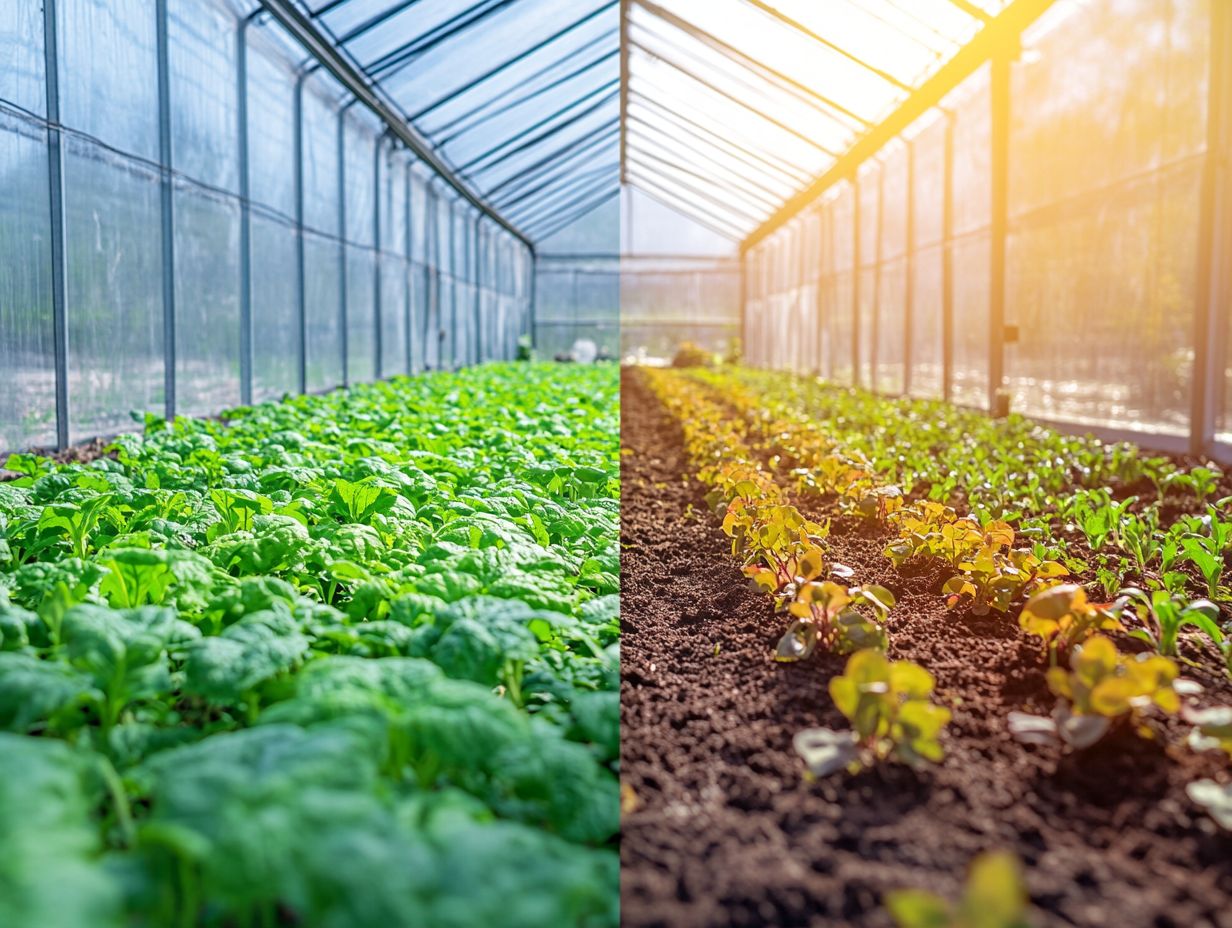
- Greenhouses provide a controlled environment for plants, allowing them to grow in ideal conditions all year round.
- They protect plants from pests, harsh weather, and extreme temperatures.
- Greenhouses can extend the growing season, leading to longer harvests and bigger crop yields!
What are the Cons of Greenhouses?
- Greenhouses can be expensive to build and maintain, especially with advanced technology.
- They require significant energy to regulate temperature and humidity, raising utility costs.
- Greenhouses are vulnerable to structural damage from severe weather events, like strong winds or heavy snow.
Are there any environmental benefits to using greenhouses?
Yes! Greenhouses help reduce water and pesticide usage in crop production, making them more environmentally friendly.
Can greenhouses support sustainable farming?
Absolutely! Greenhouses enable practices like organic farming and growing plants in stacked layers. These methods help save resources and cut down on pollution.
What are the economic benefits of using greenhouses?
Greenhouses provide farmers with a steady income by allowing year-round crop production. They can also command higher prices for out-of-season produce, which is crucial for financial stability!
Do greenhouses have any drawbacks for the environment?
Greenhouses can deplete natural resources, such as water and energy, if not managed well. Excessive pesticide use may also disrupt local ecosystems.


